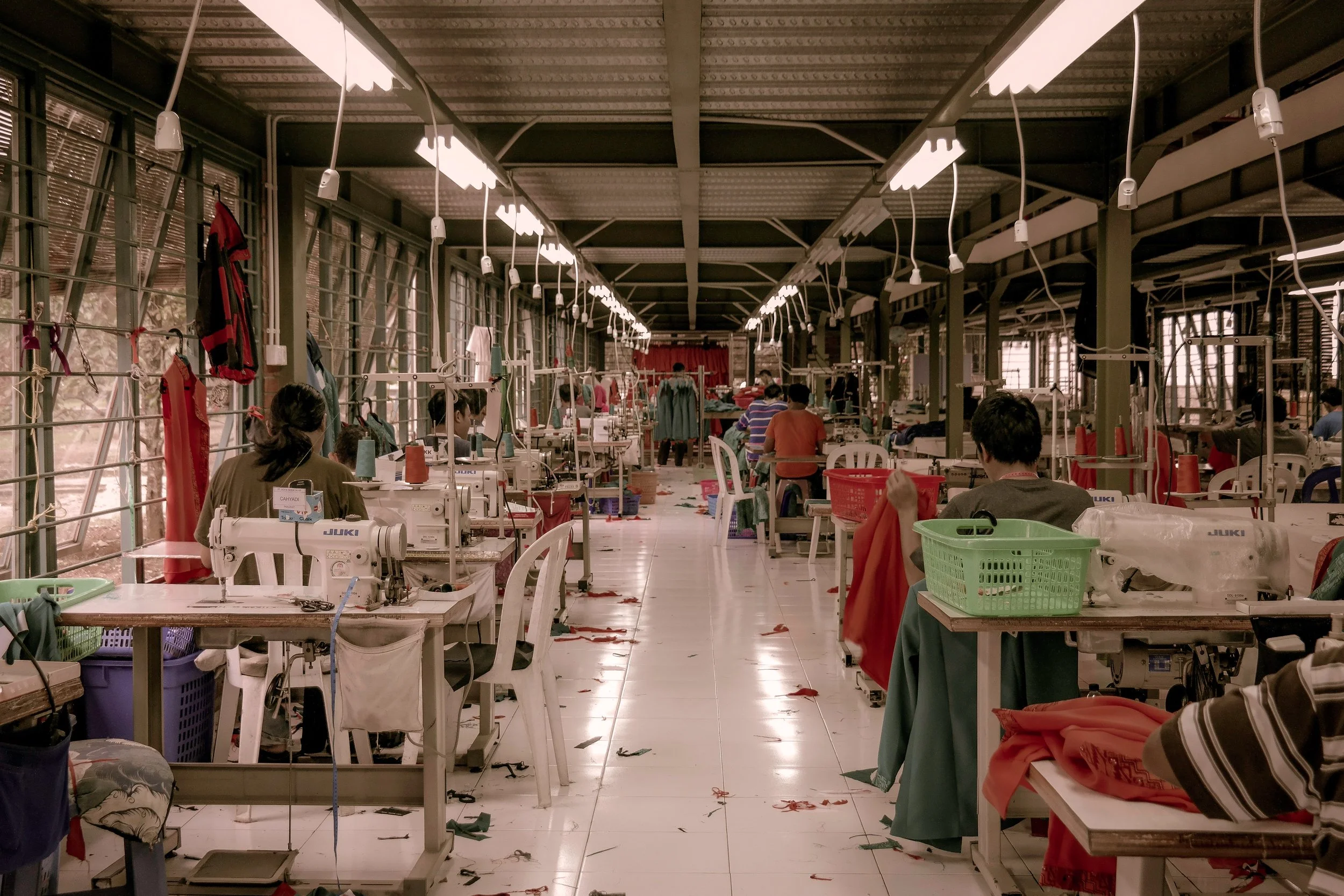The Problem With Fast Fashion & What You Need To Know
In the last 15 years, clothing production has doubled yet the number of times each item is worn has decreased by 35%.
We are now consuming over 400% more clothing than we were 20 years ago.
Clothes are continually on sale as fast fashion brands struggle to move the massive volume of continuously changing stock each week.
The problem with fast fashion is not only environmental but ethical. Exposure to toxic chemicals and poor working conditions in the textile industry highlight significant human rights violations.
Hazardous work conditions, child labour, and underpaid staff are part of what makes inexpensive fast fashion possible and it is the reason stores can sell the stock for half the price of what it used to cost consumers.
The fast fashion industry is set to reach $38.94 billion USD by 2025.
Brands such as Zara, H&M, UNIQLO, Forever 21, GAP, Forever 21, Fashion Nova, Shein, Mango, Boohoo, Urban Outfitters, Missguided, Nasty Girl, and Topshop are known for producing large volumes of clothing and using marketing techniques to encourage buyers to shop the latest trends.
In addition, these companies are known for pushing the throw-away culture of fast fashion on social media and adding thousands of new items to their online stores each week. On average, items purchased are worn seven to ten times before being thrown away or replaced.
The Life-Cycle Of Textiles
To understand the environmental impacts of the fashion industry, we need to be familiar with the life cycle of these products.
The manufacturing process requires several steps to produce a garment including:
Sizing
Bleaching
Weaving
Knitting
Dyeing
Washing
Finishing
Packaging
Shipping
Chemical Use
It is estimated that during the life-cycle stages of textiles, 8000 different chemicals are used.
According to the Swedish Chemicals Agency KEMI, 30% of the chemicals used during clothes manufacturing pose a risk to human health.
Annually, 43 million tonnes of chemicals are used to produce textiles.
Some of these substances include, but are not limited to:
Pesticides
Solvents
Dyes
Pigments
Plasticisers
Water repellents
Wastewater Contamination
Textile dyeing is still the second-largest polluter of water worldwide and it comes with a number of negative impacts on the planet and human health.
Key issues include:
Chemicals may end up in marine waters and cause severe damage to plants and animals.
Large amounts of chemicals are degraded by microorganisms that consume oxygen leading to an oxygen deficit that prevents other plants and animals from breathing.
Dark-coloured water prevents light from entering the ocean, which is a critical factor for photosynthesis affecting animals' and plants' ability to survive.
Some toxic substances may inhibit plant growth, thus affecting the oxygen balance in the ocean.
20% of global water pollution is directly from the textile industry.
Heavy metals may even accumulate in animal tissues and may lead to human health issues such as kidney disorders, dermatitis and diarrhoea.
The Release Of Microplastics
According to an IUCN report on microplastics, synthetic fibres are a primary contributor to microplastic pollution.
This can be explained since these fibres go through physical stress in the washing machines. In addition, these microfibers are too small and cannot be retained by water treatment plant filters.
A study published by Nature found that microfibers released from the washing process decreased significantly after the 8th-10th cycle. This will vary depending on the fibre materials and mixing.
Sustainable Alternatives
The best thing you can do to reduce your overall impact on the planet is to reduce the number of fashion items you purchase. Next, consider how you dispose of your used clothing. Finally, there are sustainable and eco-friendly fashion brands that offer alternatives.
Organic Fibres
Another great option to avoid microplastic release from washing cycles is using natural or organic fibres. These fibres not only use fewer chemicals during their production but are also free of microfibers that may pollute our oceans.
Natural Inks
Natural inks degrade easier since they come from nature and are familiar to microorganisms. Using natural inks will decrease your carbon footprint associated with the dyeing process.
Think Vintage
Check out online vintage stores if there is no thrift store near you. Preloved clothing is much more sustainable, and you may be surprised at what you can find. This option also results in less waste going to landfill.
Final Thoughts
It’s obvious that fast fashion isn’t going anywhere and the burden is being placed on consumers to make sustainable decisions. The volume of clothing piled up and shoved onto the rack is obvious as large department stores struggle to sell stock faster than they can replace it.
If you can, try and minimise the amount you purchase, focus on quality over quantity, and don’t be afraid to thrift vintage items that will be fashionable for years to come.
References
Boucher, J., Friot, D., “Primary Microplastics in the Oceans”, IUCN, 2017.
De Falco, F., Di Pace, E., Cocca, M., Avella, M., “The contribution of washing processes of synthetic clothes to microplastic pollution”, Scientific reports, 2019.
“A new textiles economy: Redesigning fashion’s future”, The Ellen McArthur Foundation, 2017.
Saxena, G., Kishor, R., Zainith, S., Bharagava, R.N., “Environmental contamination, toxicity profile and bioremediation technologies for treatment and detoxification of textile effluent”, Bioremediation for Environmental Sustainability, 2021.
Saratale, R., Rajesh Banu, J., Shin, H., Bharagava, R.N., Saratale, G.D., “Textile Industry Wastewaters as Major Sources of Environmental Contamination: Bioremediation Approaches for Its Degradation and Detoxification”, Bioremediation of Industrial Waste for Environmental Safety, 2019.



